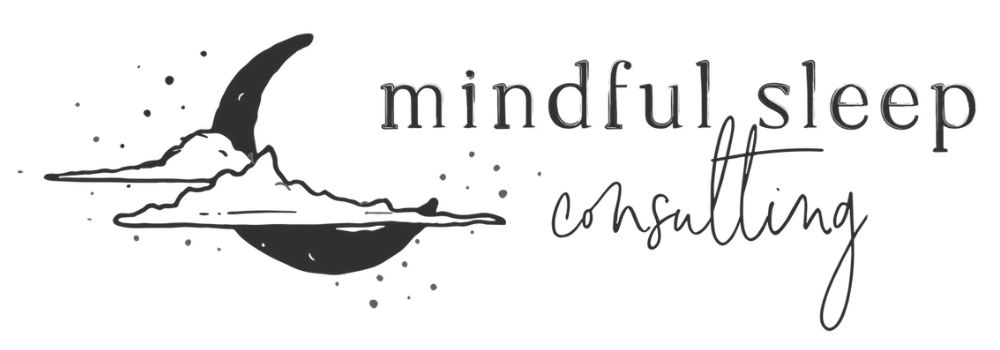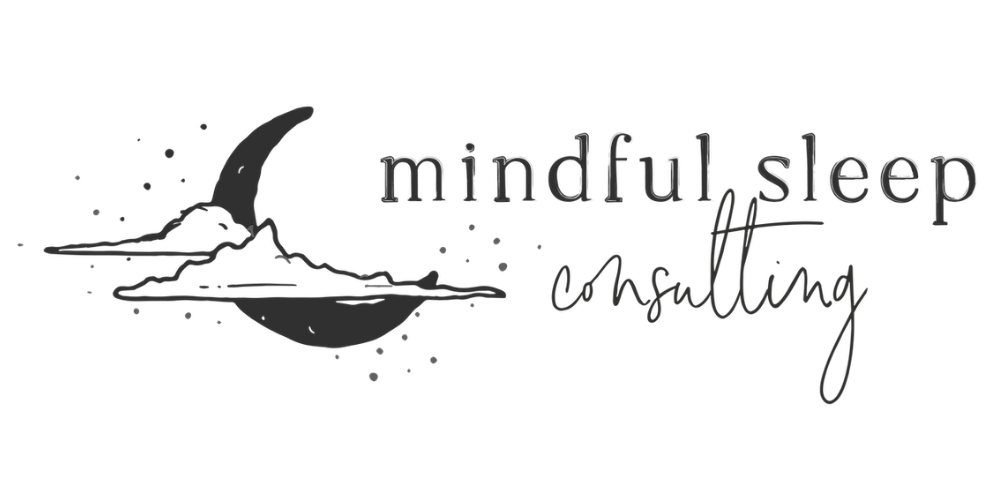How to Choose the Best Sleep Sack To Keep Your Baby Cozy All Night
In the vast array of baby gear, sleep sacks are what I consider to be a must have item. Selecting the perfect sleep sack involves considering factors such as fabric, size, and TOG rating, depending on your climate. By adhering to AAP recommendations and choosing a sleep sack tailored to your baby's needs, you'll create a secure and comfortable sleep environment that supports their safety and well-being! Of course, there is an overwhelming amount to choose from and it can be difficult to narrow down which is the best sleep sack for your baby or toddler. Don’t worry though, I’ve got you covered!
In this blog, we'll explore:
The benefits of sleep sacks
The best options
Choosing the right fabric and TOG rating based on your climate
Why sleep sacks are a safer alternative to traditional blankets, supported by recommendations from the American Academy of Pediatrics (AAP)
Why Choose a Sleep Sack Over Blankets?
1. Safer Sleep Environment: According to the American Academy of Pediatrics (AAP), a safe sleep environment is crucial to reduce the risk of sudden infant death syndrome (SIDS). Traditional blankets and loose bedding can pose suffocation hazards when they accidentally cover a baby's face. Sleep sacks eliminate this risk by securely wrapping your baby in a cozy cocoon without the risk of covering their face.
In light of October being SIDS Awareness Month, let’s recap the American Academy of Pediatrics (AAP) recommendations for safe sleep practices to reduce the risk of SIDS and create a safe sleep environment for your baby (these guidelines align with the use of sleep sacks):
Babies should sleep alone in their own crib, play yard or bassinet on a firm, flat mattress with a taut sheet. Keep their sleep surface clutter-free, with no blankets, pillows, crib bumpers, stuffed animals or other objects.
Place your baby on their back for every sleep. If your baby is comfortable rolling both ways (back to tummy, tummy to back), then you do not have to return your baby to their back if they roll over on their own.
Keep your baby’s bassinet, play yard or crib in your room for the first six to 12 months. Room-sharing decreases the risk of SIDS and makes it easier to feed, comfort and watch the baby.Only bring your baby into your own bed to feed or comfort. Return the baby to his or her own sleep space when you are ready to fall asleep.
Never place your baby to sleep on a couch, sofa or armchair.
Breastfeeding can reduce the risk of SIDS.
Avoid exposing your baby to smoke during pregnancy and after birth.
Make sure the baby is not overheated during sleep time. Do not swaddle your baby if he or she shows signs of rolling over.
2. Reduces Overheating: Overheating is another risk factor associated with SIDS. Sleep sacks are designed with breathable materials and varying TOG ratings to help regulate your baby's temperature, ensuring they stay comfortable without becoming too hot.
3. Ease of Use: Sleep sacks are incredibly convenient for nighttime diaper changes. Unlike blankets that need to be unraveled and rewrapped, sleep sacks often feature easy-to-use zippers or snaps, making late-night changes a breeze.
4. Mobility and Development: Sleep sacks allow your baby to move their legs and feet freely, promoting healthy hip development and making it easier for them to self-soothe. They are also a great alternative for keeping your toddler warm at night until they develop the ability to pull a blanket up over themselves.
5. It Becomes a Sleep Cue: Over time, your baby will begin to recognize the steps of their bedtime routine and the sleep sack becomes a cue to their brain that it is time for sleep!
Choosing the Right Sleep Sack Fabric
Selecting the perfect sleep sack fabric depends on the climate in your region. Here are some fabric options and recommendations:
Cotton Sleep Sacks: Ideal for warm climates, cotton sleep sacks are breathable and lightweight. They help regulate your baby's temperature and prevent overheating during hot summer nights.
Fleece Sleep Sacks: Fleece sleep sacks are perfect for cooler climates. They provide extra warmth and insulation, keeping your baby cozy on chilly nights.
Merino Wool Sleep Sacks: Merino wool is a natural, temperature-regulating fabric suitable for various climates. It keeps your baby warm in the cold and cool in the heat while wicking away moisture.
Bamboo: Bamboo is a breathable and sustainable resource. It is also cooler than other fabrics, helping to regulate body temperature and prevent overheating.
Understanding TOG Ratings
You’ve likely seen the abbreviation TOG with a number by it on the label of a sleep sack. What the heck does TOG mean? It stands for Thermal Overall Grade and is a rating system to indicate the warmth and insulation level of sleep sacks. Choosing the right TOG rating depends on the room temperature in your baby's nursery. Here's a breakdown of TOG ratings and their relevance to different weather conditions:
0.5 TOG: Suitable for warm weather or hot summer nights when the room temperature is around 75°F (24°C) or higher.
1.0 TOG: Ideal for moderate temperatures in spring or fall when the room temperature is between 68°F and 75°F (20°C - 24°C).
2.5 TOG: Perfect for cooler nights and winter months when the room temperature drops below 68°F (20°C).
3.5 TOG: Reserved for very cold climates or rooms with temperatures significantly below 68°F (20°C).
*Keep in mind, you will need to consider the nursery temperature and what baby is wearing underneath the sleep sack as well to prevent overheating. You can pin the guide in the image below to Pinterest or save it as a post on the Mindful Sleep Instagram for future reference!
Recommended Sleep Sacks by Climate
Now, let's review the best TOG rating on sleep sacks based on climate:
Hot and Humid Climates: Opt for lightweight cotton sleep sacks with a 0.5 TOG rating to keep your baby cool and comfortable.
Moderate Climates: Consider sleep sacks with a 1.0 TOG rating, suitable for spring and fall when temperatures are milder.
Cooler Climates: Fleece or merino wool sleep sacks with 2.5 TOG ratings offer excellent warmth for winter nights.
Very Cold Climates: In extremely cold conditions, choose sleep sacks with a 3.5 TOG rating to ensure your baby stays snug and warm.
Some of my Favorite Sleep Sacks:
1. Halo SleepSack: Halo is synonymous with safety and user-friendly designs. Their sleep sacks are designed for different temperatures, with options ranging from lightweight to cozy fleece.
2. aden + anais Classic Sleeping Bag: Made from breathable muslin fabric, aden + anais sleep sacks are gentle on your baby's delicate skin. Plus, they come in a wide array of stylish designs.
3. Merino Kids Go Go Bag: Crafted from natural merino wool, these sleep sacks are your go-to choice for temperature regulation and moisture-wicking properties, making them perfect for various climates.
4. Ergobaby Sleeping Bag: Ergobaby offers spacious sleep sacks with different TOG ratings to cater to varying weather conditions. Their focus is squarely on comfort and safety.
5. Kyte BABY Sleep Bag: Kyte BABY's sleep sacks are a symphony of softness, thanks to silky bamboo fabric. Seriously, they are amazing and my go-to recommendation! You'll find them in various styles and sizes to suit your baby's needs.
6. Baby Deedee Sleep Nest: Baby Deedee sleep sacks are all about convenience with their shoulder snaps. They come in a range of TOG ratings, making them adaptable to different seasons.
7. Woombie Grow With Me Swaddle: Designed to grow as your baby does, Woombie sleep sacks provide a secure and cozy sleep environment without the need for traditional swaddling.
8. Touched by Nature Organic Cotton Sleep Bag: Made from organic cotton, these sleep sacks are not only gentle on your baby's skin but also eco-friendly. You'll love the adorable patterns.
9. Little Sleepies Bamboo Viscose Sleep Bag: Little Sleepies sleep sacks are a perfect blend of softness and breathability, thanks to bamboo viscose. Plus, they feature charming prints designed with your baby's comfort in mind.
10. Gunamuna Baby Long Sleeve Wearable Sleep Bag:A breathable sleep sack with long sleeves that is perfect for the winter months or colder homes.
*Important: It is recommended by the AAP to avoid weighted sleep sacks.
In conclusion..
Sleep sacks have many benefits for your baby or toddler! Just be sure to keep in mind the above factors when considering the ideal sleep sack for your little one!
If you’re reading this and struggling with your baby’s sleep, you don’t have to wait until you reach your breaking point with sleep deprivation to ask for help (like myself and so many others have!).
I offer free 30-minute calls to see if working together would be a good fit. I am here to be your go-to person, to answer your questions and support you, making the sleep training process easier on the whole family!
Cheers to better sleep!
Yasmin Johnston
Your Pediatric Sleep Consultant







